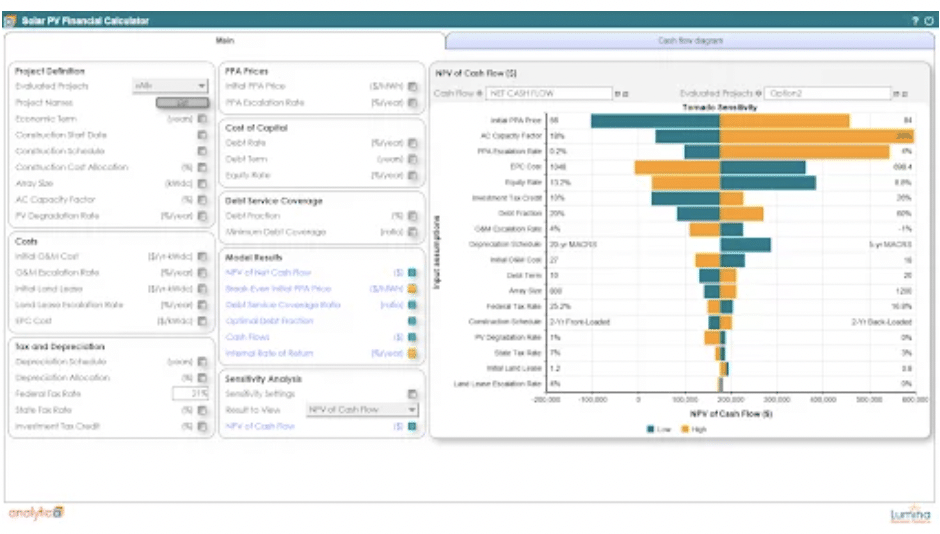
The challenge
Renewable portfolio standards (RPS) require power companies to reduce greenhouse gas emissions by generating a percentage of electricity from renewable sources, such as wind, solar, hydro, or biomass. With the introduction of RPS in many US states and European countries, utilities find themselves in an increasingly complex landscape with many renewable energy options, rapidly evolving technologies, changing tax incentives, uncertain demand, and more.
Guidehouse has developed RE-Sim™ to assist utilities in navigating this landscape with clarity. They helped Tucson Electric Power (TEP) to comply with Arizona’s RPS requiring the generation of 15% of electricity from renewable sources by 2025.
This standard also specifies that a percentage of the renewable energy be satisfied through distributed generation (DG) technologies, such as small-scale photovoltaics located near their users. TEP needed to develop strategies for procuring utility-scale resources and encouraging the adoption of DG. It also needed to forecast the likely costs of compliance with the RPS and to estimate the impact of utility incentives on the adoption of DG technologies.
TEP hired Guidehouse to create a model to provide them with the data needed to file renewable-energy implementation plans with the Arizona public utility commission. This model had to estimate:
- The progress toward compliance at central utility-scale, and distributed generation at residential sites and commercial customer sites
- The cost of achieving compliance
- The contribution of each technology toward compliance
- The cost per kWh for each technology and for the portfolio as a whole
Why Analytica?
To meet TEP’s needs, Cory Welch, Guidehouse’s Lead Model Developer, adapted RE-Sim, which he had previously built using Analytica. Welch said,
“The primary advantage Analytica provides over competing tools is its flexibility and responsiveness to client needs, which stem from its Intelligent Array algorithm. This feature lets us adapt quickly to client requests for new scenarios or technologies with minimal effort. It also results in faster, lower-cost development, often by a factor of two or three.”
“Another advantage was the ease with which I could develop a graphical user interface. Since TEP wished to conduct scenario analysis on its own, it was key to provide them an interface that permitted them to do so with little effort.”
The results

Authors

Cory Welch, Jane Pater Salmon, and Frank Stern – Guidehouse.
For more
This project was developed by Guidehouse Consulting in association with Tucson Electric Power (TEP).





